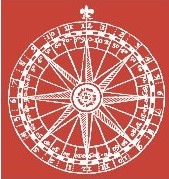« Moy Traductrice » : le façonnement de la figure auctoriale dans le paratexte des traductions de Marie de Gournay
Marie Le Jars de Gournay’s prolific textual production has attracted increasing scholarly attention in the last few years. One of the still relatively understudied parts of her oeuvre comprises the five translations from Latin that occupy 274 out of…
Listed in Article | publication by group Iter Community
Version 1.0 - published on 17 Oct 2025
Licensed under Creative Commons BY-NC 4.0
Description
Marie Le Jars de Gournay’s prolific textual production has attracted increasing scholarly attention in the last few years. One of the still relatively understudied parts of her oeuvre comprises the five translations from Latin that occupy 274 out of the 995 pages of her 1641 Advis. As Montaigne’s “fille d’alliance”, she seems to be mainly known for her French versions of the Latin quotations in the Essais; however, her own translations from Ovid’s Elegies or Virgil’s Aeneid have been largely overlooked, as well as the liminary writings—some of which prove quite substantial, as her De la façon d’escrire de Messieurs l’eminentissime Cardinal du Perron et Bertaut—where Gournay offers her remarks on the art of translation. In this essay, I wish to focus on these paratextual writings to examine the self-defining strategies employed by Marie de Gournay in order to legitimize her translation activities. Faced with the obstacles caused by “the little credit given to her sex”, as well as the specific challenges posed by her sources, Gournay interestingly presents her work as composed in “such an unscholarly season” (“une saison si peu studieuse”), that is at a time when the humanist ideals of the sixteenth century were no longer valued. This article seeks to attend to the ethos constructed through the dedications and other liminary pieces in the second book of the Advis, and to examine how Gournay’s discursive ethos serves to anticipate and guide the reception of her translations. In this context, paratexts should be viewed, not as mere accessories, but rather as an essential discursive framework for the interpretation of Gournay’s translations—it is actually quite clear from the arrangement of the volume that the liminary material was designed as a tight interpretive frame for the translated texts. This study will eventually allow us to determine the place of translation within the range of authorial practices embraced by Marie de Gournay.
Cite this work
Researchers should cite this work as follows:
Tags
Notes
Original publication: Beaulieu, Jean-Philippe. "« Moy Traductrice » : le façonnement de la figure auctoriale dans le paratexte des traductions de Marie de Gournay." Renaissance and Reformation 35 (4): 2013. 119-134. DOI: 10.33137/rr.v35i4.19702. This material has been re-published in an unmodified form on the Canadian HSS Commons with the permission of Iter Canada / Renaissance and Reformation. Copyright © the author(s). Their work is distributed by Renaissance and Reformation under a Creative Commons Attribution-NonCommercial 4.0 International License. For details, see https://creativecommons.org/licenses/.
Publication preview
Iter Community
This publication belongs to the Iter Community group.
When watching a publication, you will be notified when a new version is released.
